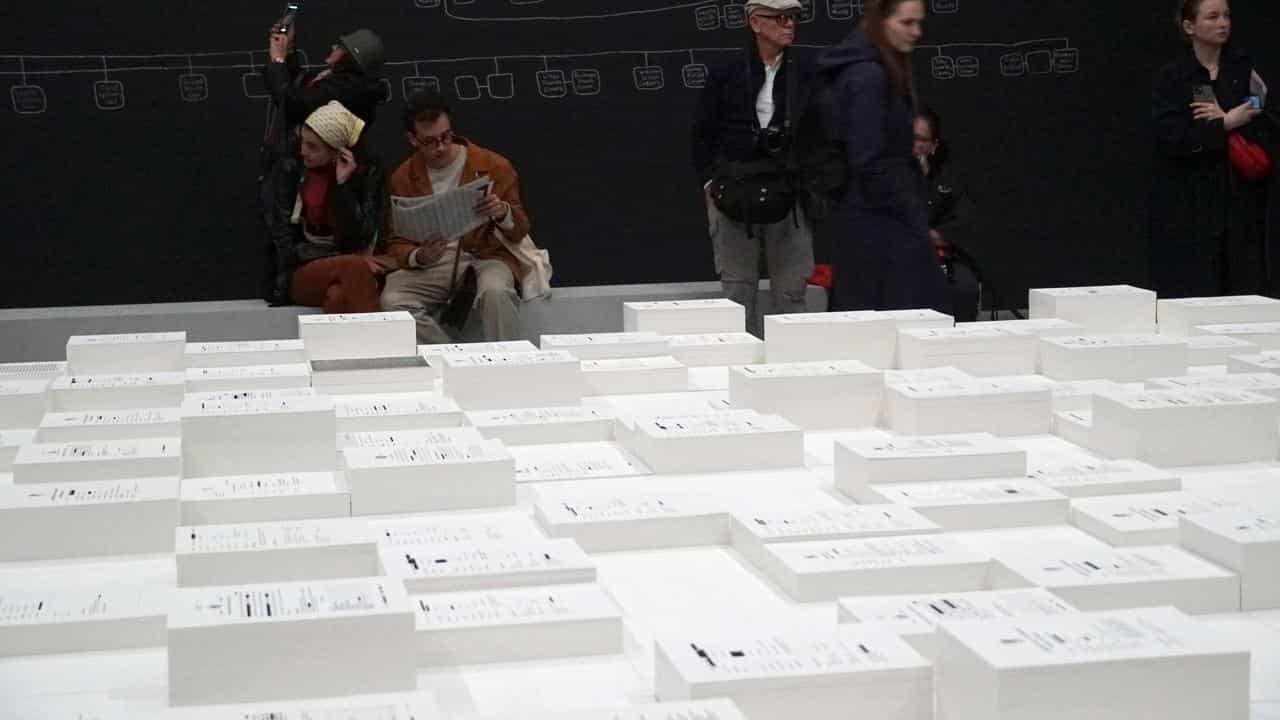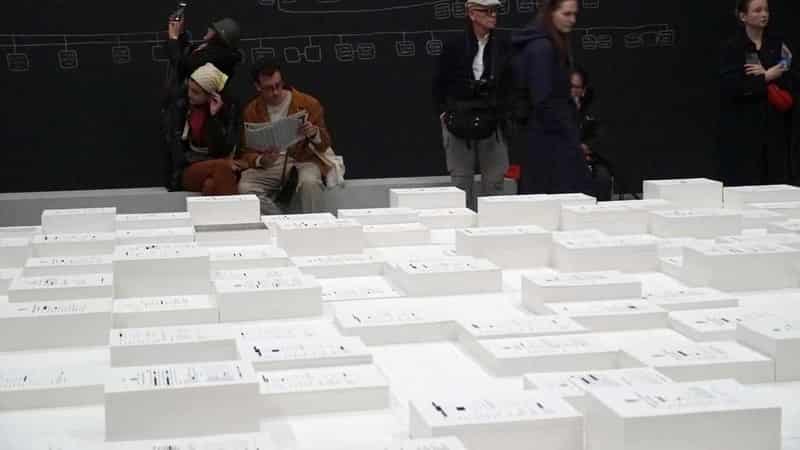
For an artwork all about history, Archie Moore’s kith and kin has been making some history itself.
In April, the installation won the prestigious Golden Lion for Australia at the 2024 Venice Biennale, the nation's first win.
The federal government announced Monday it has acquired the artwork, and will give it to both the Tate in the UK and the Queensland Art Gallery and Gallery of Modern Art.
“I am so grateful for this generous donation that enables kith and kin to be seen both here in Australia and overseas, in the near and distant future,” the artist said in a statement.
Tracing Moore's own Aboriginal heritage over 65,000 years, as well as his British ancestry, the work is a genealogical map so vast it resembles a map of the cosmos.
Each name hand-drawn on the pavilion walls in white chalk represents part of the artist's lineage, demonstrating a continuum of First Nations culture that transcends linear concepts of time.
At the centre of the installation is a reflective pool, in the middle of which sits a table stacked with documents - more than 500 piles of papers, mainly from coronial inquests into the deaths of Indigenous Australians in police custody.
But how could such an artwork belong in two institutions at the same time?
It's because kith and kin is actually a set of instructions, rather than a physical object, so a fresh version of the artwork is drawn each time the work is exhibited.
This means it can co-exist in both the UK and in Queensland, ensuring its legacy on a global stage.
"In its unimaginable endeavour to map a personal genealogy through more than two thousand generations, Moore has summoned up an extraordinary image of human connection through deep time," said Queensland Art Gallery and Gallery of Modern Art director Chris Saines.
The artwork, curated by the gallery's Ellie Buttrose, is still on show in the Australia Pavilion in Venice until November 24, and will then be installed at the gallery in Brisbane from August 2025.









